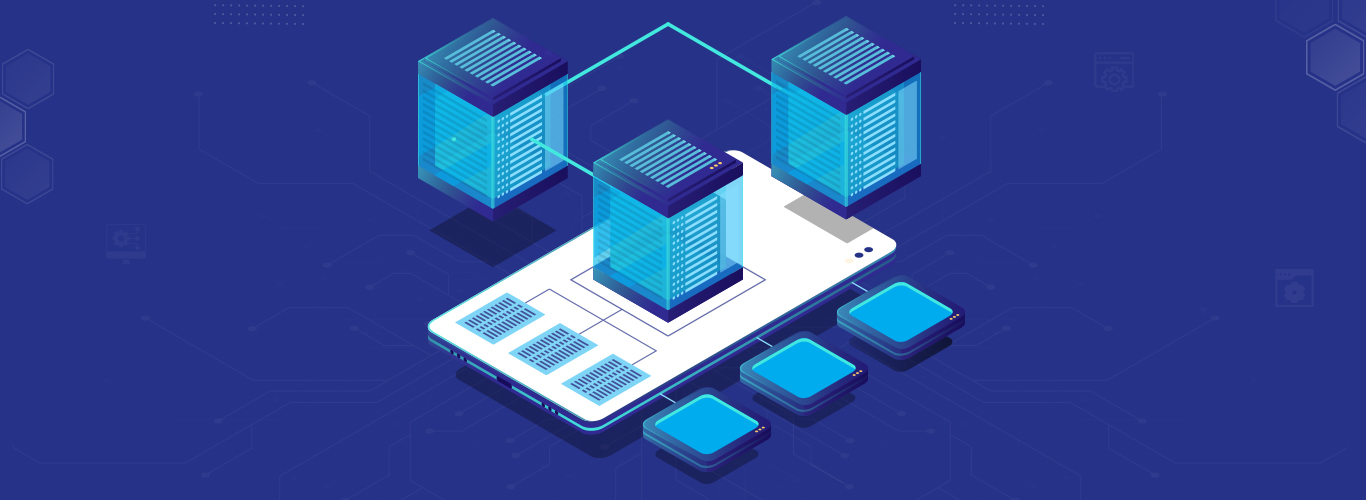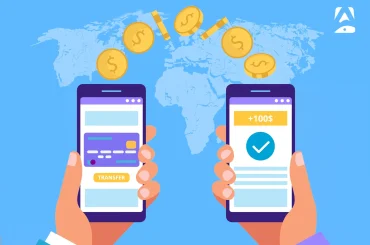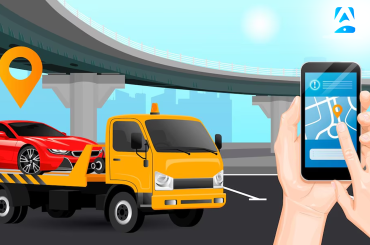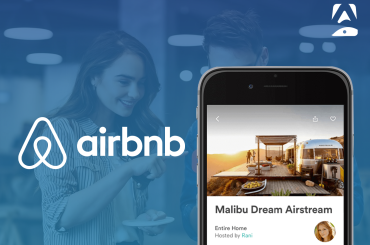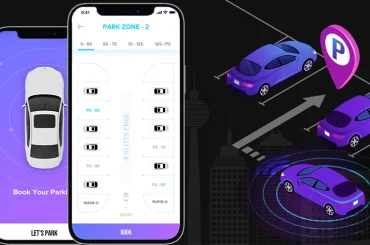Smartphones and other mobile devices have taken on a prominent role in our lives as the desire for computer technology that can be used at anytime and anywhere has increased. The applications on a smartphone are its main selling point.
The average smartphone user uses many applications for almost all of their needs. Some users depend on apps to place their online food orders, while others use them to stay in touch with loved ones, whether they are nearby or far away.
It is impossible to adequately explain an app’s flawless user experience without addressing its efficient mobile app backend architecture. In the article, we’ll discuss backend app development and the software supporting the development of a robust backend process, and the software stacks used for backend architecture.
Architecture Dependencies of a Mobile App
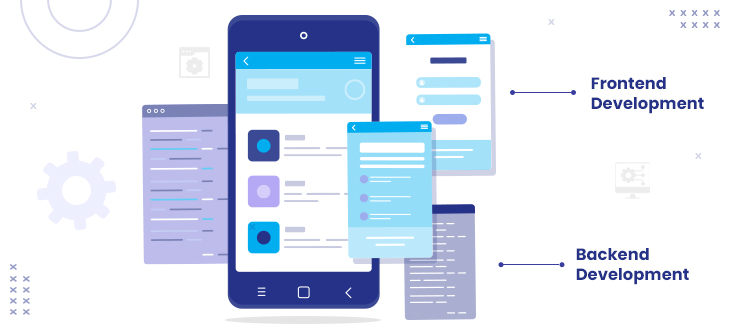
A mobile app is a piece of art and an example of human ingenuity, innovation, creativity, and problem-solving skills. As users use only the public interface of the app, they may confuse it for the entire application. But that is not the case. The architecture makes them work flawlessly, it consists of two parts: backend and frontend development.
Frontend Development
The appearance and feel of a mobile app that a user encounters are referred to as the frontend, to put it simply. It entails designing a special “User experience” (UX) for the app’s users to entice them to use it repeatedly.
A mobile app’s front end is where the UI and UX magic happen. It is the portion of the app that end consumers download and set up on their phones after purchasing it from app stores.
A front-end developer is concerned with how a user interacts with the program; what icons or animations they see; and what actions are and is not permitted. They discuss how to convey data that originates from the server or backend.
Backend Development
Although it operates fully in the background, the backend is essential. The bulk of the labor-intensive work connected to data verification, authentication, processing business logic, data storage, and security is performed by the backend.
The backend server can accurately and quickly store, retrieve, and organize crucial data to provide end users with a flawless computing experience. A single glitch in the backend can have an impact on millions of people worldwide.
Backend development is the process of planning, creating, delivering, and maintaining the server-side application code for a mobile app. It includes all of the operations taken on in the background when people use the app and interface with it.
Frontend vs Backend
Front-end development is programming that constantly focuses on the user-interactive visual aspects of a website or app (the client side). Back-end development concentrates on the portion of an app that the user cannot see(the server side). Together, they develop interactive apps that let users use contact forms, make purchases, and engage in other interactive activities on websites. Netflix, PayPal, Facebook, and the incredible collection of captivating gaming applications you’re on right now are a few instances of dynamic apps.
Its Functionality: Why is App Backend Development Important
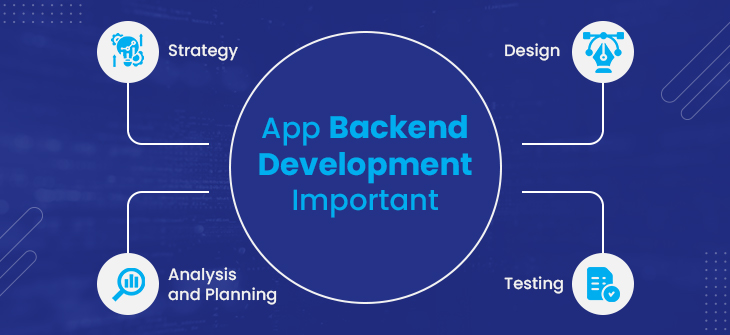
In an engaging app that includes server-side integration, the role of mobile app backend app development is inevitable. The role encompasses process, security, and data interpretation. The below-listed functions are the backbone of a complex app.
Strategy
We all understand how crucial strategizing is, and it’s a given in the app development sector. To start strong, we must work on our strategy, gain a thorough understanding of the competitors, technology stack, and process overflow, and develop a broader base for the developers to create a unique mobile app.
Analysis and Planning
Strategy and analysis work hand in hand. For any mobile app backend development process, analysis and planning help developers to prioritize the development needs, and discussing the competitive app case study for better understanding and helps in developing an efficient app.
Design
Design is one of the most crucial factors in building a backend app. The design process ensures that your software is functional, appealing, and simple to use. Your workflow, style guidelines, architecture, and other things would all be synchronized through an effective backend for applications.
Testing
Testing is the shining armor of mobile app backend development. To get an efficient app, the developers need to incorporate various types of testing, such as unit testing and user testing, both via automatic and manual testing processes.
Functions associated with Backend and their Use Cases
Behind every successful app a series of comprehensive types of backend solutions supporting the apps features every day. Here we enlisted the basic types of backend solutions with their use cases.
-
Saas or Third-party Services
SaaS, an abbreviation of Software as a Service, is a third-party service providing developers with a ready-to-use solution for both front-end and back-end development, especially cloud-based mobile app backend development with a subscription cost. Isn’t it simple? Right!
Let’s have a look at its use cases and examples.
Weather API Application
Starting a weather app from scratch is a tedious task. The Weather Data Application can ease the task of transferring weather data by synchronizing with the front-end applications. Just pay a subscription fee, and it’s good to go.
CMS
You’ll need a mechanism to handle everything if a front-end app shows the different text, photographs, videos, movies, or several different types of videos. You may simply manage any kind of material after creating an account, whether it’s a blog post, an article, a newsfeed, or anything else. Front-end apps can upload the material via an API.
MS Office
MS Office is one of the most popular and secure Saas examples. Microsoft Office is a collection of programs intended to increase productivity and carry out typical operations on a computer. You can make presentations and posters, deal with data in databases and spreadsheets, and create and edit documents with text and graphics.
-
MBaaS Mobile Backend as a Service
An easy and scalable website or application may be created using backend-as-a-service, or BaaS, a form of third-party service, without you having to worry about the backend. Your ability to concentrate on the front end is increased thanks to BaaS, which relieves you of costly and time-consuming chores.
It frees you from the laborious work of managing user permissions, setting up user authentication, and fueling your development by providing you with access to the infrastructure that is pre-bundled, such as APIs (Application Programming Interfaces) and SDKs (Software Development Kits). Let’s take a look at its use cases.
Data Management
Database management services are not generally offered by MBaaS providers. A typical MBaaS provider will be able to communicate with a user’s database, but they might not provide the option to create a database on the platform itself.
User Management
MBaaS provides support for user management, helping users to log in, register, and manage their account. User authentication is the key usability of MBaaS.
-
Cloud Server
Today, the introduction of the cloud server is known to everybody, and its dependency is unavoidable. The cloud services come in various sizes with different protected locations. The cloud servers are the bridge, filling the gap between users and the market. The major service providers like Google, Amazon, Microsoft, and Oracle offer different cloud server services with different subscription prices. Here are some of the use cases of a cloud server in mobile app backend development.
Cloud Storage
In the case of compromised data, cloud backup enables your company to transmit a copy of your cloud data to another location so that you may restore information, guarantee business continuity, and guard against catastrophic IT disasters.
Customer Onboarding
Everyone loves personalized and customized solutions, and with the help of cloud servers, the necessary analytics tools, and a flexible workflow to make changes within the app. Additionally, it made soliciting new customers by email simpler and made it easier to follow the user experience.
-
Custom Server
The most adaptable and potent choice is this one. An individual backend can accomplish whatever SaaS or MBaaS cannot. Of course, the cost of setup and implementation is the primary development constraint in custom server development. It necessitates the use of a team or a single backend coder. Depending on the needs of your application, the custom backend may be a straightforward application or a sophisticated distributed system.
Mistakes to Avoid Mobile App Backend Development
The mobile app backend development process is nothing less than an adventure, but this could be an overwhelming task or sometimes a nightmare if the following mistakes aren’t avoided.
Over-Optimization of the Code
Eventually, over-optimization or technical debt results in lost development time since creating each new feature gets harder and harder until it eventually becomes almost impossible. In a worst-case scenario, each new feature takes disproportionately longer to build since it necessitates testing every potential route or updating every condition in the production code to incorporate both the new and the old features.
The code is too challenging to maintain due to both technical debt and overengineering.
Undervaluing App QA
To prevent restriction and backfire of the app, undervaluing app testing is a sin. When it comes to testing, there is a wide range of testing tools and methodologies available.
Using too Many Functionalities in the Beginning
Inconsistent technologies or methods make maintenance more challenging since it necessitates much more expertise, increases the likelihood of flaws or vulnerabilities because there are more dependencies, and slows down installation because there are more dependencies to install.
The Working of Server and Architecture
The process of designing the structure and business logic of the backend of an app is known as backend architecture. Users can use the app’s many features and browse it with ease thanks to a strong backend architecture. The consumer doesn’t need to be concerned about the intricate processes taking place in the background.
Your mobile application’s backend is developed so it may operate as planned. Based on servers, databases, and middleware, the backend differs from application to application.
Backend Stack Breakdown
Without beating around the bush, let’s know the main components of the backend software stack.
Server
Hosting is the most obvious use of a backend. If you create an HTML-based online application, you must find a means to host it so that consumers can eventually access it. You may avoid hosting if you create a native app for a mobile or desktop platform. A server is storage that gathers the ins and outs of the user’s interaction with the app.
Middleware
The client and server are connected through middleware. By enabling interaction between on-premises software and cloud apps, middleware offers features including data transfer, authentication, web services, error management, and data integration. The processing, management, user interaction, authentication, and content management of the apps may all be improved with good middleware.
Database
The database is the backbone of an app. It is what makes an app trustworthy and dynamic. The main purpose of a database is to handle queries, fetch the data, and give it to the user.
The Tech Stack Breakdown- An Insight of Backend Developer Tools
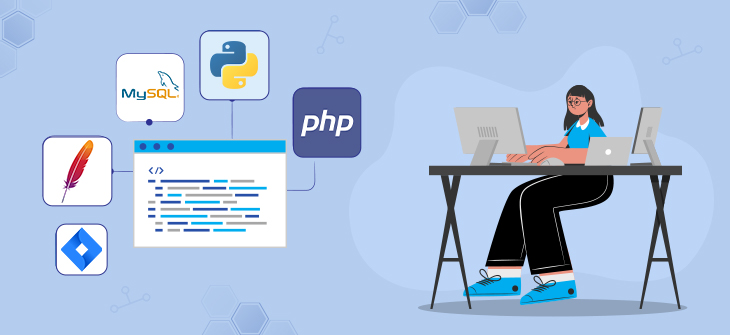
-
Web Server Tools
Apache HTTP Server
One of the most reliable and after-sought web servers, Apache HTTP Server is fast and secure and used by 67% of the developers.
Apache Tomcat
Tomcat is also a one-of-a-kind web server, but not as reliable and secure as HTTP Server.
NGINX
NGINX is an open-source server that is typically used as an email proxy. It may also be used as a reverse proxy, media player, streamer, load balancer, and HTTP cache.
-
Databases Tools
Oracle RDBMS
It is an RDBMS that uses user-defined types, polymorphism, and other object-oriented capabilities.
IBM DB2
You may update the administration of both structured and unstructured data across several clouds and on-premises systems with the aid of the IBM DB2.
Microsoft SQL Server
Another well-known RDBMS product from Microsoft. It is used in corporate intelligence, analytical, and transaction processing applications.
MySQL
Many frameworks used by developers to create applications for data warehousing, transaction processing, and e-commerce employ MySQL.
-
Git Clients
SourceTree
An open-source GUI Git client is SourceTree. It makes it easier for developers to deal with Git repositories so they can focus on writing code.
GitHub client
By combining CSS, HTML, and JavaScript, this tool is used to create cross-platform desktop applications.
-
Microservice Platform Tools
Kubernetes
Kubernetes’ main objectives include automating deployment, offering scalability, and managing application containers across a cluster of many servers.
Docker
Giving developers quick and simple packaging deployment and distribution techniques, makes microservices a reality.
-
Local Development Environment
WampServer
Web apps and databases are created and managed by mobile app development businesses using this open-source development environment.
XAMPP
It supports PHP and Perl language script creation. The World Wide Web can also be served web pages using XAMPP.
Laragon
A quick, secure, portable, and potent development environment for Node.js is called Laragon. It is ideal for creating and maintaining contemporary apps since it is light, quick, simple to use, and straightforward to modify.
-
Communication Tools
Slack
Organizations connect using this cloud-based collaboration and messaging platform. People may access the information they require through it.
Jira
Jira is a piece of software for managing projects and keeping track of issues. It manages its web-based product management using Scrum and Kanban.
-
App Performance Testing Tool
Apache JMeter
Created by Apache, Jmeter is a testing tool, used to gauge and assess the effectiveness of the app and other web services.
App Loader
This tool generates an identical user experience across all of its access points while testing an application.
Advantages of Mobile App Backend Development
- With the focused mobile app backend development, the end result received Faster development option.
- Information Sharing is a breeze with Backend App Development
- Clean Code Stacks with code logic
- Focus driven, but could drastically change user experience
- Adds functionality to the Front-end features
- Making the whole development process Cost-efficient
- Focus on core business, leading it to be the faster delivery
- Loss-less data integration by outsourcing cloud infrastructure
- Continuous delivery and integration with prioritizing security
- With good backend development strategy the app receives boosted Performance.
Words to Wrap up
The role of Backend app development cannot be understated, it is the backbone of an app. While developing the backend, you need to focus on the timeliness and the right tech stack. In the article we have listed all the required details for a mobile app backend development, and if you are still in any question and unable to take the right decision, all you got to do is consult a reliable app development agency to breeze the process of an app for your idea.

